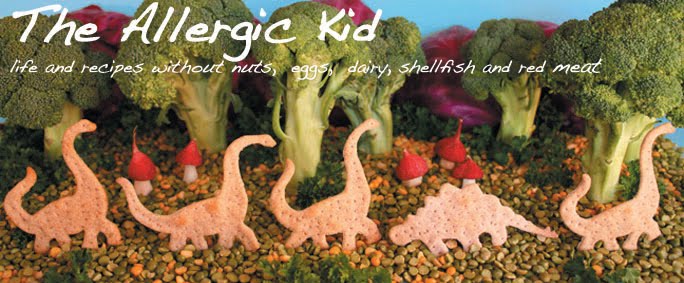2011-11-16
Food Labels: Reading Between the Lines for Cross-Contamination
I simply adore sesame oil. I love the flavor it brings to Asian cooking, and the nuttiness it adds to other dishes. For the last few years though, I have essentially stopped using it, because of my difficulty finding a brand that wasn't at risk of cross-contamination. It seems every distributor of sesame oil that I've contacted is also bottling peanut oil in the same facility.
(By the way, an easy way to spot another allergy mom at the grocery store is to look for a woman squinting at an ingredient label with a cell phone pressed to her ear and a look of extreme frustration on her face.)
So imagine my excitement when my husband proudly brought home a bottle of Sun Luck Pure Sesame Oil. "All Natural" the label exclaimed. "No gluten" was featured in a little symbol on the side. And the ingredients? "Pure sesame seed oil" followed by "NO ALLERGENS, NO PRESERVATIVES ADDED."
It seemed like my lucky day.
Being fairly untrusting, especially when it comes to glib assurances regarding allergens with the potential to threaten my child's life, I still pulled up the web site to do some checking before cracking open the bottle. There I found another item in the Sun Luck product line, Thai Peanut Sauce. I immediately tried calling the company's phone number to find out if the items are manufactured in the same facility. Unfortunately, it was after business hours and I wasn't able to get an answer. Needless to say, I didn't use the sesame oil with our salmon that night.
The next morning I gave them another call, only to have my suspicions confirmed. The sesame oil is indeed being processed on the same line as the peanut sauce. The person I spoke to initially defended the label, saying that it only had to include the ingredients inside the bottle, not ingredients from other items in the facility, but became very sympathetic when I explained the severity of The Kid's peanut allergy. Although I take corporate assurances that feedback is being passed up the food chain with a grain of salt, the woman I spoke to seemed genuinely concerned. I explained that those of us managing food allergies read labels extremely closely and look for facilities and equipment warnings, so that the way that the label was worded was, well, somewhat misleading.
It's hard enough reading every label without having to suspiciously search for inaccuracies or unlabeled cross-contamination. One of these days I'm going to put Mad Eye Moody's words, "Constant Vigilance!" up on my kitchen wall. In the meantime, I'll be squinting at labels and gritting my teeth at my cell phone in the grocery store.
This post was written as part of NHBPM – 30 health posts in 30 days.
Labels:
food allergen labeling,
food allergies,
NHBPM
Subscribe to:
Post Comments (Atom)



3 comments:
Thank goodness you checked! I find one always needs to check the ingredients list...even on products that you 'think' are safe. Companies change their manufacuring of products and one needs to always be on alert. This is a great reminder to us all! Vigilence is needed for sure! susan H @ the food allergy chronicles
This is my frustration too. Then when someone asks me what to look for in labels to see what's safe my reaction is a blank "umm....". This is what you can't teach people.
You'd think that will all the emphasis on eating healthy, natural unprocessed foods that manufacturers would clue into the fact that the public, especially with the current and ever increasing amount of people with severe/life threatening food allergies need to have full disclosure with respect to food labeling. Thank goodness you are so thorough.
Post a Comment